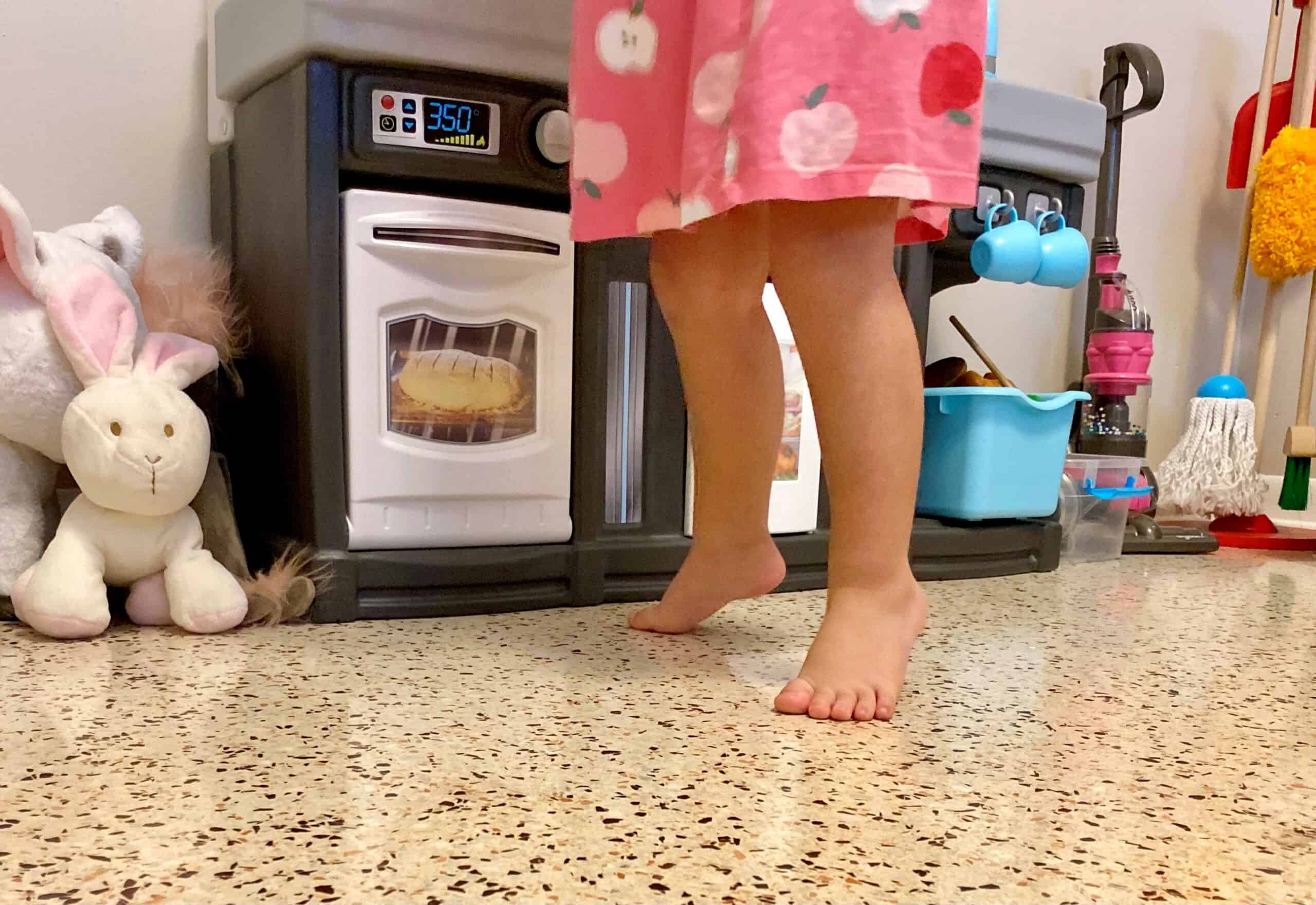Toddler Toe Walking: What’s Normal, What’s Not
Toe walking, as the name implies, describes a pattern where the child walks on his or her toes. The child steps on the front part of his or her foot, and the heels do not hit the ground. Toe walking is considered normal up to age 2. Intermittent toe walking after that can be normal, but persistent toe walking may merit further evaluation. Paul Benfanti, M.D., a pediatric orthopaedic surgeon at Johns Hopkins All Children’s Hospital, helps parents understand if and when they should be concerned about a child who might show signs of toe walking.
What Causes Toe Walking?
Idiopathic toe walking (ITW) implies that children walk on their toes for no identifiable reason. Some common underlying causes include cerebral palsy, autism and muscular dystrophy. The first task is for the child’s pediatrician to do a thorough history and physical exam to confirm that there is indeed no underlying cause. The physician will ask questions about the child’s birth history, developmental history and family history (ITW may run in families).

Looking for Things to Do in Tampa Bay?
>>This Week’s Favorite Events
>> Nearby U Pick Farms
>> 40+ Free Things to Do with Kids
The physician will then watch the child walk and perform a physical and neurological exam. Note that some underlying causes cannot be detected on routine examination. If an underlying cause is identified, the child will be referred for further workup to the appropriate specialty. Treatment for that type of toe walking will be dependent on the cause. Some cases of neurological toe walking require treatment; others do not.
When to Seek Treatment
If an underlying cause is not identified, then treatment may be started based on the child’s age and physical findings. There is no single right way to treat ITW, so there will be some variation depending on the patient, parents’ desires and treating physician’s experience.
Treatment Options
There have been many treatment options described in the literature including observation, physical therapy, stretching, Botox injections, casting, bracing, surgery and combinations of some of the above. The first goal of treatment is to ensure the child has the range of motion necessary to walk with a heel-toe pattern. If the child has static ITW, meaning a fixed tightness of the heel cord, it will need to be corrected before it is possible to walk normally. Each child is different, and your physician will suggest the best treatment option for the child.
Visit HopkinsAllChildrens.org/Newsroom for more pediatric healthcare information.
 About the Author: Dr. Paul Benfanti is a pediatric orthopaedic surgeon at Johns Hopkins All Children’s Hospital. He sees patients in the St. Petersburg and Tampa locations of Children’s Orthopaedic and Scoliosis Surgery Associates (COSSA), L.L.P. and the Johns Hopkins All Children’s Outpatient Care locations in East Lake and Pasco. COSSA is the exclusive provider of pediatric orthopaedic services at Johns Hopkins All Children’s Hospital. Dr. Benfanti is board certified and has been recertified by the American Board of Orthopaedic Surgery. He is also a member of the American Academy of Orthopaedic Surgery, the American Academy of Pediatrics and the American College of Surgeons, American Orthopaedic Foot and Ankle Society, the Pediatric Orthopaedic Society of North America, the Pinellas and Hillsborough County Medical Societies and the Florida Orthopaedic Society.
About the Author: Dr. Paul Benfanti is a pediatric orthopaedic surgeon at Johns Hopkins All Children’s Hospital. He sees patients in the St. Petersburg and Tampa locations of Children’s Orthopaedic and Scoliosis Surgery Associates (COSSA), L.L.P. and the Johns Hopkins All Children’s Outpatient Care locations in East Lake and Pasco. COSSA is the exclusive provider of pediatric orthopaedic services at Johns Hopkins All Children’s Hospital. Dr. Benfanti is board certified and has been recertified by the American Board of Orthopaedic Surgery. He is also a member of the American Academy of Orthopaedic Surgery, the American Academy of Pediatrics and the American College of Surgeons, American Orthopaedic Foot and Ankle Society, the Pediatric Orthopaedic Society of North America, the Pinellas and Hillsborough County Medical Societies and the Florida Orthopaedic Society.
Paul Benfanti, M.D., is on the medical staff of Johns Hopkins All Children’s Hospital, Inc. (“JHACH”), but is an independent practitioner who is not an employee or agent of JHACH.





